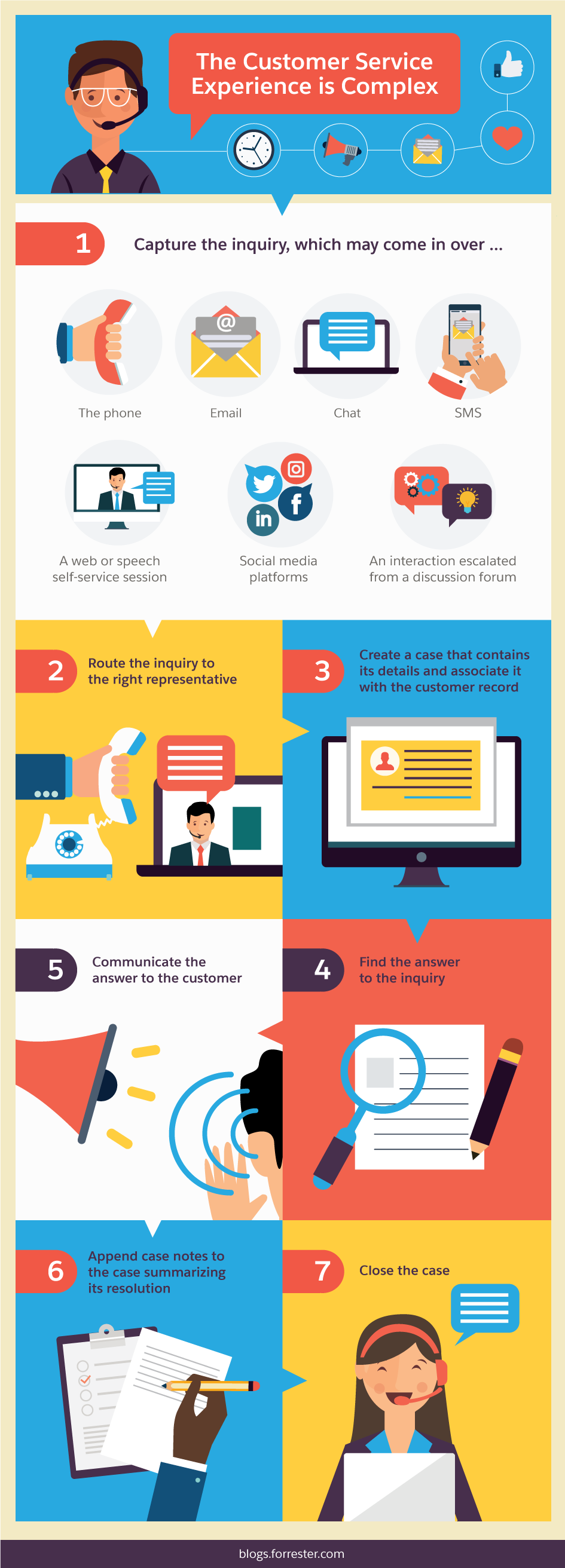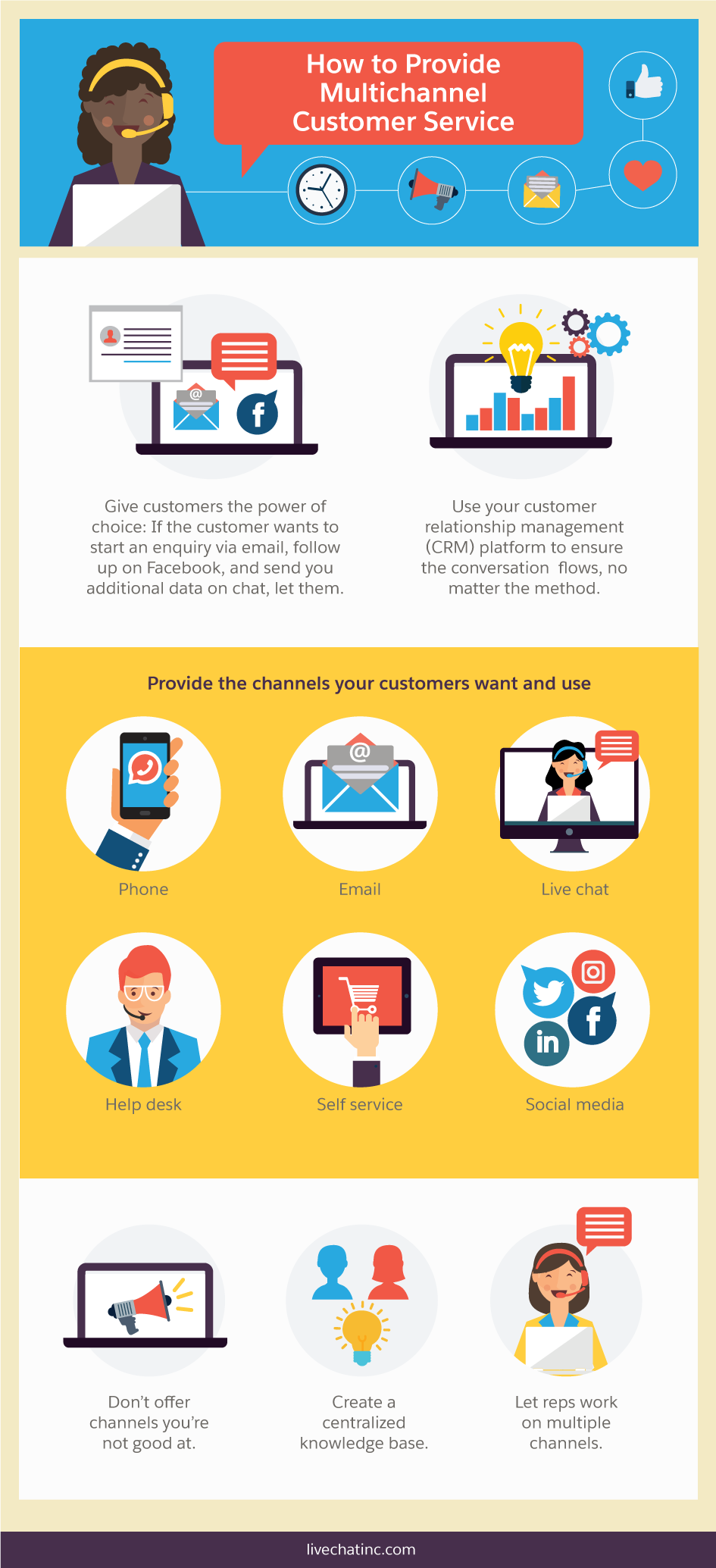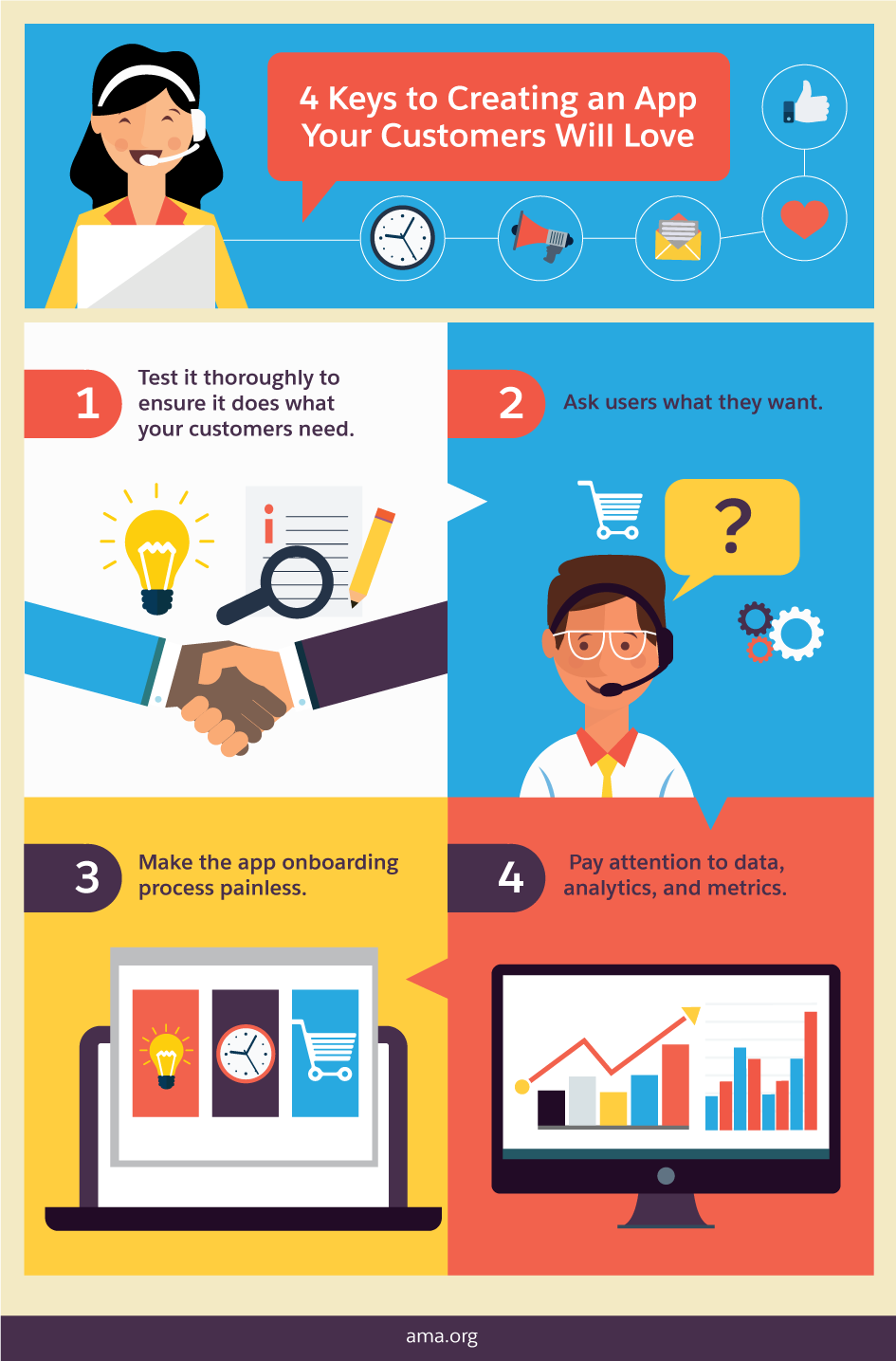A company’s customer service department is an essential function. These employees help maintain your company’s relationships with its customers, and without customer loyalty, a business may flounder. Fortunately, technology is starting to play a larger role in customer service as more businesses incorporate automation and other resources into the way they respond to customer needs. Read on to learn how companies are using technology to stay on top of customer service, and why this strategy improves the customer experience as a whole.
The Customer Service Experience is Complex
- Capture the inquiry, which may come in over
- The phone
- Chat
- SMS
- Social media platforms
- An interaction escalated from a discussion forum
- A web or speech self-service session
- Route the inquiry to the right representative
- Create a case that contains its details and associate it with the customer record
- Find the answer to the inquiry
- Communicate the answer to the customer
- Append case notes to the case summarizing its resolution
- Close the case

1. Improve the Lines of Communication
What is one of the best ways companies can use technology to enhance the customer experience? Improving communication. Gone are the days when customers could only reach a customer support centre on the phone between the hours of 8 a.m. and 5 p.m. Today, a customer should be able to contact a business whenever they need to, and through a variety of channels such as text message, email, social media platforms, and live chat on a company’s website.
This is not to say that businesses should abandon call centres. Large numbers of people still want to speak to customer support representatives on the phone. This classic avenue shouldn’t be ignored, just supplemented with the other previously detailed options.
In general, younger generations would rather contact a business through Facebook or other social media platforms, or have their questions answered via text. An older demographic likes the familiarity of being able to speak to a real human on the telephone.
The point is that if you want your customer service department to be successful, make sure you offer a variety of options for your customers to contact company representatives to have their needs met quickly and efficiently. Regardless of your audience, having options is the only way to really test what works. One company that does this well is Macy’s: while they’re missing a live chat option, their website is a good example of making it clear that they want customers to contact them.
How to Provide Multichannel Customer Service
- Give customers the power of choice: If the customer wants to start an enquiry via email, follow up on Facebook, and send you additional data on chat, let them.
- Provide the channels your customers want and use
- Phone
- Live chat
- Help desk
- Self-service
- Social media
- Use your customer relationship management (CRM) platform to ensure the conversation flows no matter which method you use
- Don’t offer channels you’re not good at
- Create a centralized knowledge base
- Let reps work on multiple channels

2. Resolve Issues and Respond to Customers
What’s the best way to respond to customer feedback once you’ve received it? Erica Kuhl writes about a four-step process for turning customer feedback into action:
- Create a single source of truth for feedback.
- Identify measurable ways to gauge the impact of incoming feedback.
- Operationalize feedback review and response.
- Close the loop.
These steps are important: As a customer service team, your job is about solving whatever problems your customer may be facing.
Technology can help streamline this process. Social media is a particularly great way to enhance the customer service experience. Facebook isn’t just for getting likes, and Twitter shouldn’t only be used to rack up followers. Most businesses have business pages on multiple social media platforms, and their users take advantage of them to seek solutions to their problems. Pizza Hut’s Twitter followers, for example, know they can reach out to the restaurant chain and expect a response.
If someone has a question about a product or wants to discuss an interaction, they’re just as, if not more, likely to post an inquiry on the company’s Facebook page or tweet them about it as they are to pick up the phone and call the company directly. Therefore, companies that recognize this and devote part of their customer service team to responding to these social media messages fare better than those that ignore or don’t prioritize them.
Another example of a brand responding to its customers using Twitter is the Gaylord Opryland Hotel, which made sure one of its customers received a special alarm clock made only for the hotel after she tweeted the company telling them how much she liked it. And Air Asia makes it a point to respond to all customer complaints and inquiries on its Facebook page in a timely manner and with helpful links and advice. (It’s a big job, considering they have almost 3 million “friends.”)
When you interact with your customers on social media, make sure you follow some basic best practices. This technology has made it easy to communicate directly with customers, but it must be done correctly in order for it to be worth the effort.
3. Develop an App that Makes Tasks Easier
The phrase “there’s an app for that” is fairly literal; there‘s an app available for pretty much anything you need, from handling your finances to getting a ride or ordering a pizza.
Most businesses know what their customers need from them, and many companies have incorporated that into smartphone applications their consumers can use. Airlines have apps that allow their patrons to check in for flights, check flight times and routes, access Wi-Fi, and more. Retail stores show their product selection in their apps, allow consumers to store and access loyalty points, and provide coupons.
4 Keys to Creating an App Your Customers Will Love
- Test it thoroughly to ensure it does what your customers need
- Ask users what they want
- Make the app onboarding process painless
- Pay attention to data, analytics, and metrics

Simplifying important tasks for consumers is one part of providing excellent customer service, but you could take that one step further. Consider devoting a section of the app to customer requests and comments, then address those messages in a timely manner. Customers will appreciate how easy it is to open the app and make an inquiry from their smartphone or tablet. If your competition has an app, this use of technology is vital—and it’s not hard to get started.
4. Keep Customers Informed
An essential aspect of creating a good customer experience is keeping your customers informed about what’s going on with your business and in your industry. Technology is a great, fast way to do this. If your phone lines go down or your website will be temporarily unavailable, consider tweeting an alert . If you’re coming out with a new product or changing a current line, it’s not a bad idea to post a photo on Facebook or Instagram with information about the change.
And there’s always one of the most important technological communication tools: email. Email marketing remains king, and your customers will appreciate an occasional email update . Don’t be afraid to use multiple channels to keep your customers informed of anything relevant, including updates and new information. They will appreciate your transparency and willingness to get them the information they need in a quick and easy manner.
The Takeaway
Incorporating technology into your customer service department is a win-win for both businesses and consumers. Use it to improve your lines of communication, respond to your customers’ needs, proactively interact with customers through an app, and keep customers informed.
Learn how a customer relationship management platform can take your customer service to the next level in our eBook, “CRM: Put Your Customer at the Heart of Your Business.”
Share "4 Reasons Technology is The Key to Personalized Customer Service" On Your Site





